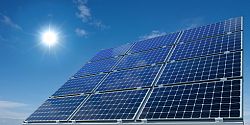

Researchers at Soochow University in China have demonstrated a solar panel that can generate electricity from falling raindrops, enabling electricity to be generated in any daytime weather and after the sun has set.
Although solar power installation has soared globally due to plunging costs making it the cheapest electricity in many parts of the world, the power output can plummet under grey skies. Researchers are therefore working on ways to increase the amount of electricity produced by panels.
The device places two transparent polymer layers on top of a solar photovoltaic (PV) cell. When drops of rain fall on to the layers and roll off, the friction generates a static electricity charge. Other researchers have recently created similar devices on solar panels, known as triboelectric nanogenerators (Tengs), however the new design is significantly simpler and more efficient.
Baoquan Sun, at Soochow University, claimed that the field is developing fast, and expects to produce a prototype product in three to five years. However, Varun Sivaram, at the Council on Foreign Relations, US, said that although the idea is interesting, the power the device generates from falling rain needs to be significantly higher to start making an overall difference to a solar panel’s output.
Other innovations in solar panel design include using the mineral perovskite as a flexible and efficient material and researching artificial photosynthesis, which uses sunlight to produce liquid and gas fuels. Other scientists in China have also used Tengs on solar cells to harvest some power from the wind.